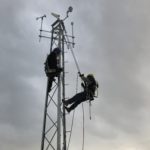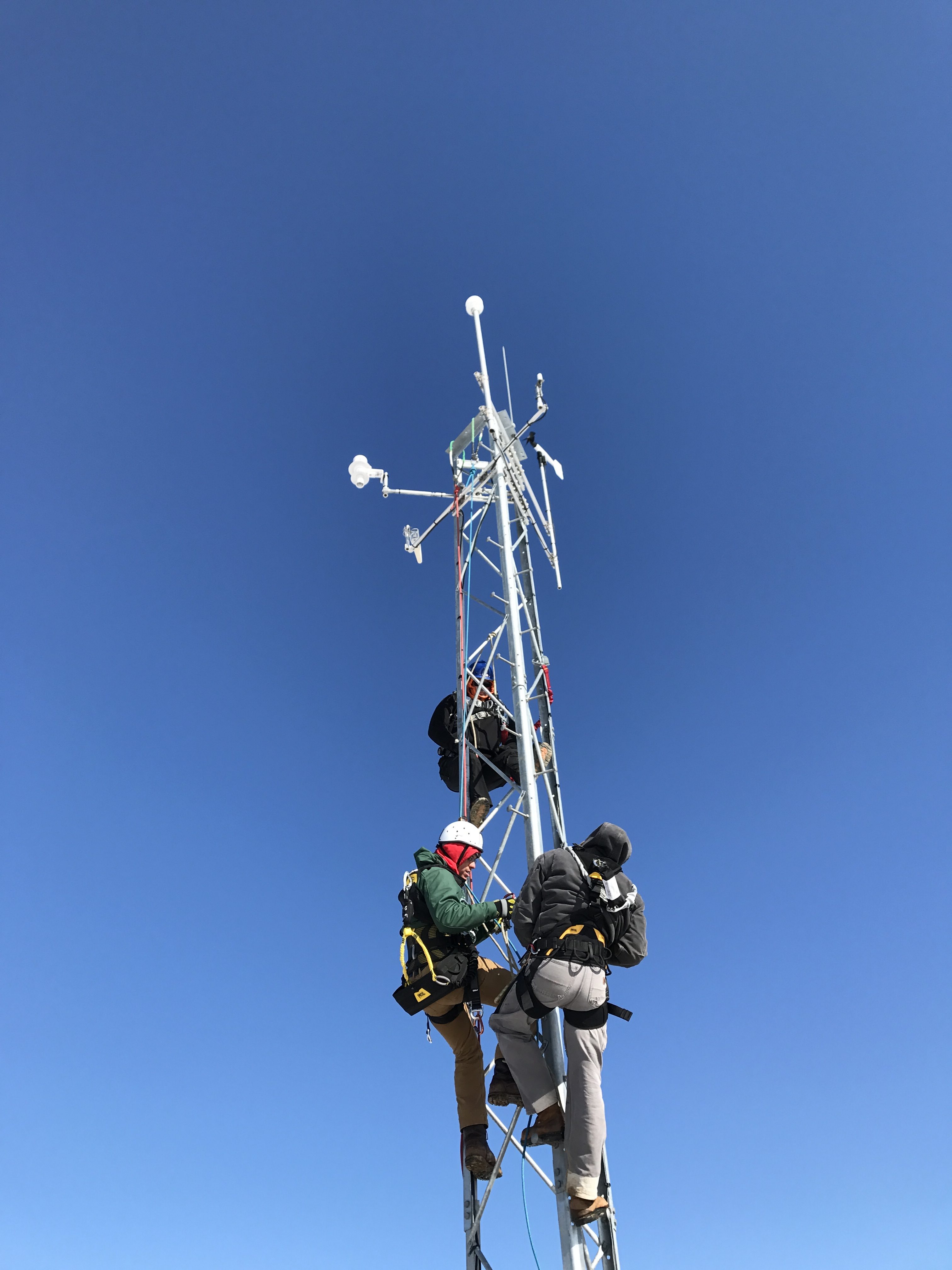
As we say in the business “When climbing towers… add hours“.
TRS has been in the Tower Climbing Safety and Rescue business for over 19 years… We have had the pleasure and honor of, not only training, but actually doing real work on towers. We understand directly and personally what it takes to work at height. From a 857′ Broadcast tower in Sicily where the temperatures got up over 100 degrees, to a 130′ cell tower in Boston in January where the temperatures got down below 18 degrees.
With that, comes a real understanding how tower climbers can “get behind the curve”. Either overheating (hyperthermic) or cold (hypothermic) our bodies can get before we realize it. Think about it, wearing a harness restricts us from “layering”. Skiing, hiking or working outdoors we have always been educated on the importance of “layering”. Well… all good except, we can not do that working at height in a harness. We also know how the “weather up there” can be significantly different from the ground (where we started). Another contributing factor is you are not moving around much. You do not have the ability “to take a walk” to warm up.
In the winter of 2017 I was training on a weather instrumentation tower in Long Island New York. Great class, great students… the tower was only 40′ (picture above), however, the wind was 24 knots and the temperature was 22 degrees (exact measurements… since we were training atmospheric scientists). I was on the tower for just over 3 hours when the last student finished their rescue evolution. It was at that time when I started to climb down, or so I thought… I realized I was in real trouble… I could not get either hand to open the gates on my fall arrest lanyard, much less climb down. Luckily, I had two hand warmer packets in my pocket. Within a few minutes I was able to get my hands warm enough to work the fall arrest gates and climb down (what seemed like 150′) to the ground. Thankfully I didn’t need a student to rescue me… but it was way too close.
So – What can we do?
Recognize how restricted we are. Not much “real estate” to move around and get warm, or take off or put on jackets / clothing layers…
Drink plenty of water – even when it’s cold – even when we aren’t thirsty – Hypothermia / hypothermia is much more likely when you are dehydrated.
Have a very understanding, educated team. Climbers as well as ground crews education on how important the temperatures outside and body temperatures are to the safety of tower climbers. I have “shouted out” many times about how extremely important the ground crew is to the climbers safety. They can truly save your life in more ways than one. Have everyone watch each other and ask often… “how ya doin’?”.
Have plenty of water, hand warmers and extra gloves! Several years ago we trained a team in Kotzebue Alaska where they climb in all kinds of weather (mainly very cold). They re-emphasized the importance of having an extra pair of gloves in your pocket or gear bag. It can truly save your life….. If you are at height and drop a glove in low temperature conditions, you can loose the use of your hand (your grip is done)….. this is a true emergency in the tower climbing business… very concerning!
Again, be aware of what environment we are climbing in. We all understand the hazards of working at height… Give it a bit more thought before climbing in very hot or very cold weather conditions.
Stay safe out there (AKA up there)!
